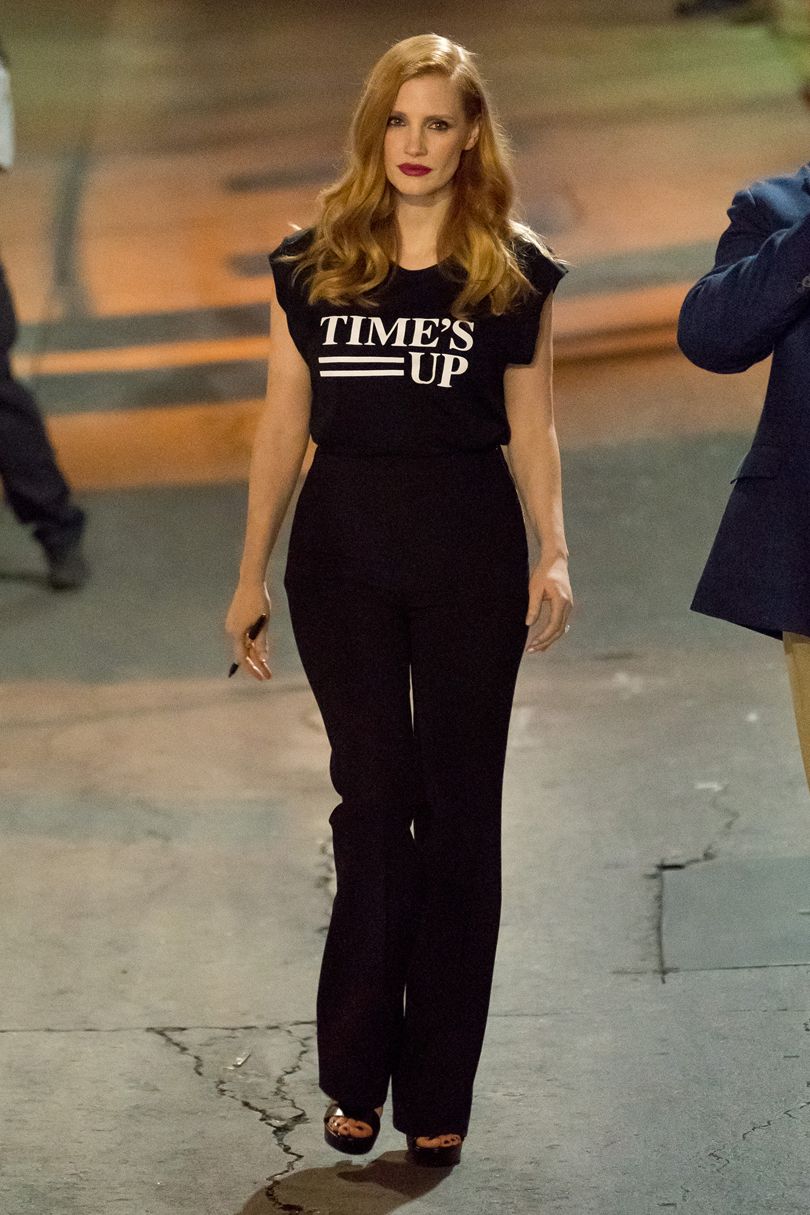Hollywood's actresses will wear black to the Golden Globes in a gesture of solidarity with the victims of sexual harassment. But does that spell the end of the red-carpet fashion routine as we know it?

“Tell me about your dress?” “It’s pink and there are stars on it.” Thus went the glorious evisceration of red carpet host Ryan Seacrest by the eventual winner of the best actress in a musical award at the 2017 Golden Globes, Emma Stone, prior to last year’s ceremony.
This Sunday, at the 2018 Golden Globes, she’ll have a little more to say about her choice of gown amongst the many Golden Globes 2018 dresses, if not its vital stats: Stone, along with numerous women who have joined the Time’s Up movement, will be giving new meaning to statement dressing by choosing to wear black as a symbolic expression of solidarity, aiming to draw attention to the sexual harassment scandal currently gripping Hollywood.
Is this the end of the red carpet as we know it? The A-list’s sayonara to best-dressed lists, getting-ready routines and the almost mechanical name-checking of designers? Will the post-Weinstein red carpet comprise a two fingers up to the female-focussed pageantry that once invited women to walk their fingers down a miniature platform for E!s Mani Cam, twirl for the 360 Glam Cam, and show off their clutch bags via – yes, really – Clutch Cam?
Certainly, in an industry-wide attempt to scale back the superficial and recalibrate the role of the awards show in the wake of the Weinstein scandal, this year’s carpet walkers can expect to be asked about a lot more than whether they broke in their brand new stilettos during the Globes rehearsal. Black fabric should be interpreted as an indication that its wearer wants to be asked more searching questions, according to Reese Witherspoon, who has previous form in this arena: in 2015, she used her appearance at the Oscars to call out sexist reporting via the #AskHerMore hashtag, which encouraged journalists to ask women about their creative endeavours rather than the firming capacities of their Spanx.
“A show of solidarity at an awards show is one very small piece,” she told the New York Times, speaking about Time’s Up. She has also commissioned 500 pins for supporters to wear. “It really is a statement that women are deeply unified, we always have been, and we stand up for those who can’t speak up.” Enter Time’s Up $13 million legal defense fund, set up to help victims of sexual harassment, legislate to penalise companies that tolerate persistent harassment, and to push for greater gender parity at studios and talent agencies.
Crouch, hold, engage the fabulous black dresses! For many, that’s not a fitting response to decades of abused power. Socially, black is considered a “safe” party dressing option, the colour you choose when everything else feels too ostentatious. Would hard-to-ignore yellow or revolutionary red have been a better hue? Is the symbol still as potent, the protest still as insistent, if the black dress is slit to the thigh – or does a high-necked, long-sleeved approach pander to a victim-blaming mentality?
Besides, shouldn’t the emphasis really be on the men to do something disruptive? At it stands, some (Tom Hiddleston, Dwayne ‘the Rock’ Johnson) have indicated that they will wear black, too, which presumably means adding a black shirt to the customary black tuxedo. Yes, intentions are good, but doesn’t that smack of peak perfunctory? Put another way, “it reads like the proper response to sexual harassment is to change one’s attire,” according to the Washington Post’s Robin Givhan. (More fun trivia: this year The Rock’s 16-year-old daughter, Simone Garcia Johnson, is to be honoured with the presenting role of “Miss Golden Globe” which for 2018 has been given the gender-neutral, marginally less antiquated title of “Golden Globe Ambassador”.)
How can we make red carpet clothes mean more? Maybe it’s about using the platform to champion sustainability, à la Emma Watson. Her promotional wardrobe for 2017’s Beauty And The Beast comprised only clothes that had been designed within strict, environmentally- and ethically-conscious parameters. Maybe it’s about balancing the froth, fantasy, and endorsement deals with hashtaggable causes, such as 2016’s #OscarsSoWhite, which effected diversification of the Academy’s judging panel.
One thing is certain: it is possible to click through picture galleries depicting the fantasy of Hollywood and to partake in the glamour without ignoring the cultural reckoning that is taking place. It would be patronising to suggest otherwise. Stay alert, people.
Source: vogue.co.uk
